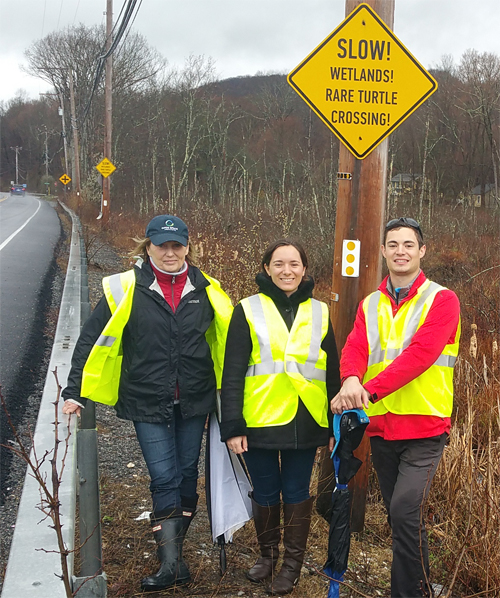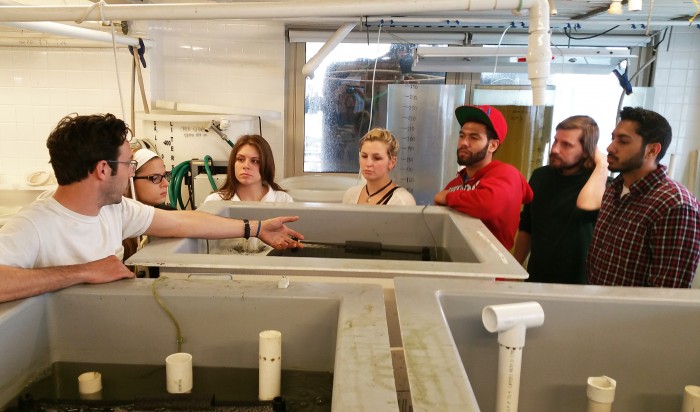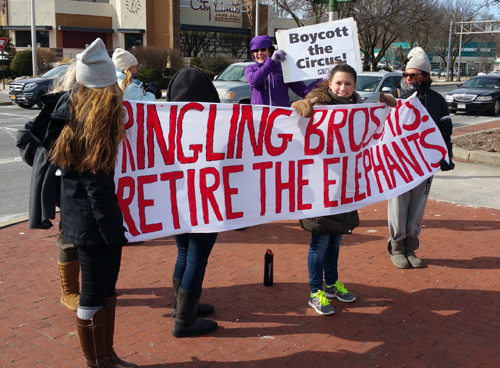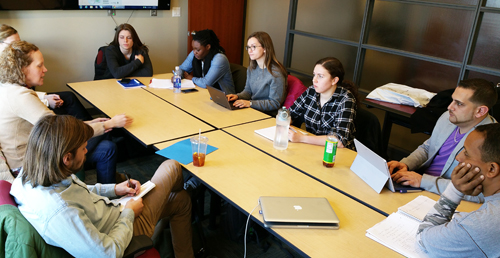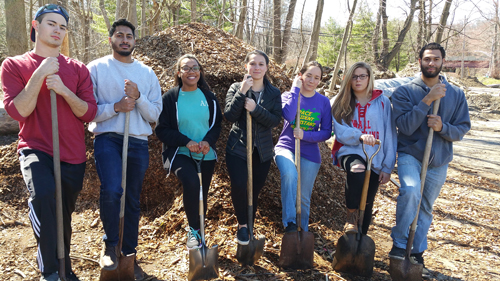![By Ed Yourdon (originally posted to Flickr as Homeless and cold) [CC BY-SA 2.0], via Wikimedia Commons](https://earthdesk.blogs.pace.edu/files/2015/10/Homeless_and_cold_sm.jpg)
“Homeless and Cold” (Note center armrest, intended to prevent reclining). By Ed Yourdon (originally posted to Flickr as Homeless and cold) [CC BY-SA 2.0], via Wikimedia Commons
IN ENVIRONMENTALISM, we believe all people deserve to live in a healthy environment. When we educate about climate change, for instance, we warn of the dire physical and economic consequences that could be visited upon people, homes and communities, here and abroad, in the decades ahead.
But homelessness is everywhere around us, today. Up to 3 million Americans are homeless at some time during the course of a year. 1.6 million are children. More than 100,000 are veterans.
There is a widespread heartlessness at-large in the land when it comes to members of our own species who lack adequate habitat. Visit the web page “Dealing with Homeless People,” created by the San Diego Police Department. This startling statement welcomes you:
The SDPD and elected officials in the County and City recognize that there is a fine line between homelessness as a social issue and a criminal issue. Many homeless are on the street because of substance abuse, mental illness or both.
With it established the City and County of San Diego see little distinction between being a criminal and having no home, and that mental illness and addiction are the pastimes of criminals, the site lists a kitchen-sink of crimes the homeless will likely commit:
[B]eing intoxicated, loitering, prowling, fighting, trespassing, aggressive panhandling, soliciting, urinating/defecating, consuming alcoholic beverages in certain public places, camping or sleeping in parks, littering, obstructing sidewalks, living in a vehicle parked on a public street, disturbing the peace by loud and unreasonable noises, using offensive words, behaving in a threatening manner and more.
The site provides a special hotline “to assist the community” with problems from the homeless. It explains how to conduct a citizen’s arrest. It tells proprietors to make open areas outside their stores unwelcoming and uncomfortable. It instructs the public not to give money to the poor, food to the hungry or water to the thirsty.
This aggressive hostility is not limited to San Diego:
- “No Safe Place,” a report by the National Law Center on Homelessness and Poverty (NLCHP), found that a majority of cities studied had devised ordinances that criminalize homelessness. For example, 76% prohibit the poor from asking fellow citizens for money in particular public places; 43% outlaw sleeping in a car.
- The State of New Hampshire evicts the homeless who camp on public lands.
- Orlando, Florida prohibits civic organizations from conducting regular food sharing.
- To keep the homeless moving on, Hampton and Newport News, Virginia forbid families from residing in hotels and motels for more than 30 days in any sixty day period.
Private institutions attempt similar, more inventive tactics. Water drenching is a favorite:
- St. Mary’s Cathedral in San Francisco doused the homeless with water rather than allow them to take shelter in the church entrance. Bad publicity prompted the archdiocese to end the practice.
- In New York, the famed Strand Bookstore installed an automated water system that drenched homeless people who stayed overnight in its expansive, covered storefront, until local media publicly humiliated the store.
Another insidious practice is “hostile architecture.” Known in the industry as “defensive architecture,” it integrates design elements into the community environment that make everyday surfaces and shelters uncomfortable, if not dangerous. You may have seen these deterrents without grasping their implication. They hide in plain sight:
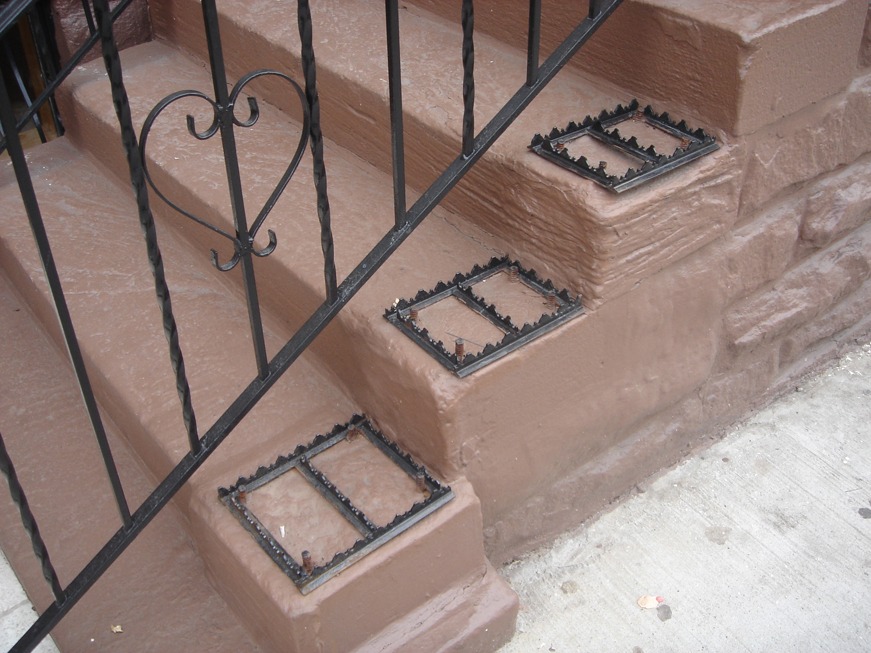
Studs on stairs prevent sitting. Photo: Nils Larson, Instagram: @dismalgarden. Used with permission.
- Strategically placed studs and spikes on sidewalks, walls, and stair edges ward off sitting and lying.
- Six-foot park benches with center armrests prevent lying down. (See image at the top of the post)
- Sharp, pyramidal shapes on flat surfaces make overhangs unusable for rest or protection from rain and snow.
- Sloping wall tops and benches make them impossible for sleeping.
American environmentalism is skilled and influential, socially and politically. Many of the issues that surround homelessness can use its special attention. Some examples:
- Hostile architecture is increasing in the urban landscape, with little to no environmental review.
- Zoning and other local laws that chase and harass the homeless are on the rise.According to the NLCHP, the most dramatic increase has been “in city-wide bans on fundamental human activities.”
- Policies for some public and abandoned lands prohibit camping by the homeless.
- 77% of American cities surveyed were forced to turn away families seeking assistance from food programs. Meanwhile, food waste is an environmental issue of escalating concern. According to the United Nations, “In the United States, 30% of all food, worth US48.3 billion (€32.5 billion), is thrown away each year.”
- Initiatives aimed at sustainability and green living rarely address public housing. The U.S. Conference of Mayors identified “lack of affordable housing as the leading cause of homelessness among families with children.”
Most important, the economic and political disparities that exacerbate poverty and homelessness are the same disparities that already make the poor and homeless the first victims of environmental injustice throughout the world.
Displaced, starved and resource deprived species are a central concern of environmentalism. If we indeed believe in diversity, reverence for life, and sustainability, no beings are more deserving of our compassion than members of our own species who have no habitat to call home.




